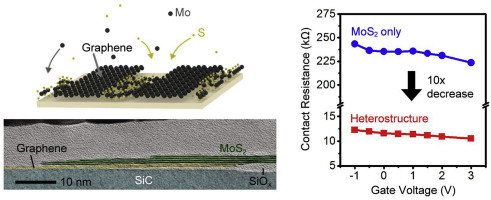
These differences are attributed to the different enhancement mechanisms related to the different electronic properties and chemical bonds exhibited by the three substrates: (1) graphene is zero-gap semiconductor and has a nonpolar C-C bond, which induces charge transfer (2) h-BN is insulating and has a strong B-N bond, while (3) MoS2 is semiconducting with the sulfur atoms on the surface and has a polar covalent bond (Mo-S) with the polarity in the vertical direction to the surface. MoS2 demonstrated the weakest Raman enhancement effect as a substrate among these three 2D materials.


Higher-frequency phonon modes of CuPc (such as those at 1342, 1452, 1531 cm(-1)) are enhanced more strongly on graphene than that on h-BN, while the lower frequency phonon modes of CuPc (such as those at 682, 749, 1142, 1185 cm(-1)) are enhanced more strongly on h-BN than that on graphene. However, it is found that the Raman enhancement effect, which is observable on graphene, hBN, and MoS2, has different enhancement factors for the different vibrational modes of CuPc, depending strongly on the surfaces. This molecule can sit on these layered materials in a face-on configuration. Here, we study the Raman enhancement effect on graphene, hexagonal boron nitride (h-BN), and molybdenum disulfide (MoS2), by using the copper phthalocyanine (CuPc) molecule as a probe. Two-dimensional (2D) layered materials, exhibiting a flat surface without dangling bonds, were thought to be strong candidates for both fundamental studies of this Raman enhancement effect and its extension to meet practical applications requirements.

Realizing Raman enhancement on a flat surface has become increasingly attractive after the discovery of graphene-enhanced Raman scattering (GERS).


 0 kommentar(er)
0 kommentar(er)
